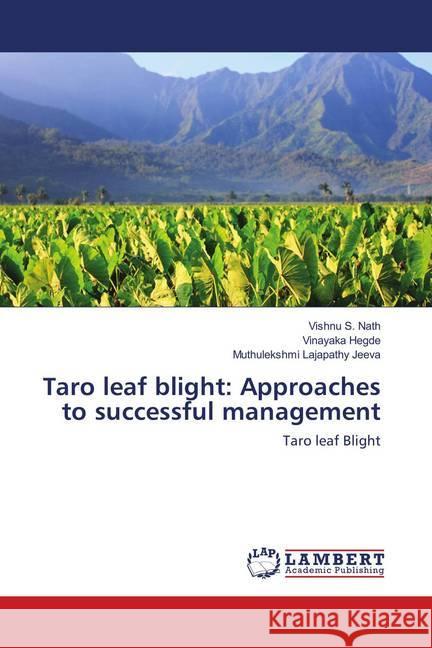Taro leaf blight: Approaches to successful management : Taro leaf Blight » książka
Taro leaf blight: Approaches to successful management : Taro leaf Blight
ISBN-13: 9783659895746 / Angielski / Miękka / 2016 / 248 str.
Taro leaf blight: Approaches to successful management : Taro leaf Blight
ISBN-13: 9783659895746 / Angielski / Miękka / 2016 / 248 str.
(netto: 297,77 VAT: 5%)
Najniższa cena z 30 dni: 313,39
ok. 10-14 dni roboczych
Bez gwarancji dostawy przed świętami
Darmowa dostawa!
Leaf blight caused by Phytophthora colocasiae is a single biggest constrain for taro production. A combination of phenotypic (colony morphology, mating type, pathogenicity, metalaxyl sensitivity) and molecular techniques (rDNA ITS sequencing and Start codon targeted polymorphism (ScoT), RAPD and AFLP markers were used to gain insights into the phenotypic and genotypic variation in P. colocasiae isolates obtained from all major taro growing regions of India. For early, sensitive and specific detection of P. colocasiae, a conventional and real-time PCR assay (SYBR Green chemistry) was developed and standardized. A set of three primer pairs was designed from regions of the RAS-related protein (Ypt1), G protein alpha-subunit (GPA1) and phospho-ribosylanthranilate isomerase (TRP1) genes. A potent Trichoderma harzianum strain (TR7) identified was able to control P. colocasiae and could be used as a promising candidate for biological control of taro leaf blight disease. A cDNA library enriched for upregulated P. colocasiae genes were generated using Suppression Subtractive Hybridization (SSH) to identify P. colocasiae genes differentially expressed during infection on taro.











